When contemplating the Everest Base Camp Trek, one can’t help but think of the blend of breathtaking scenery and rich cultural experiences that await. Many trekkers have shared how the journey through quaint Sherpa villages offers a glimpse into a way of life that’s both fascinating and humbling. As they push through the challenges of altitude and weather, they often find strength and camaraderie in fellow adventurers. But what really makes this trek unforgettable? It’s not just the views; it’s the moments that shape the experience, some of which might surprise even the most seasoned trekkers.
Good To Know
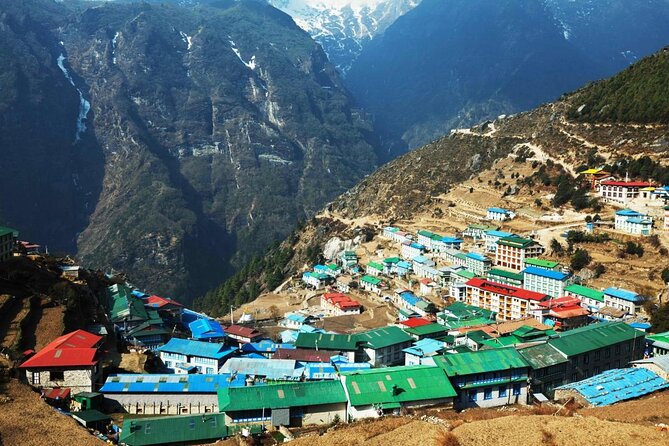
- The Everest Base Camp Trek offers stunning views, including the iconic Kalapatthar viewpoint at 5,600 meters for breathtaking sunrises.
- Optimal trekking seasons are spring (March to May) and autumn (September to November) for clearer skies and stable temperatures.
- Moderate physical fitness is essential, with recommended training in cardio and acclimatization to ensure a successful trek.
- Engaging with local Sherpa culture enriches the experience, featuring prayer flags, monasteries, and vibrant traditions along the route.
- Packages typically include transportation, permits, and accommodations, with travel insurance advised for safety and unexpected costs.
Overview of the Trek
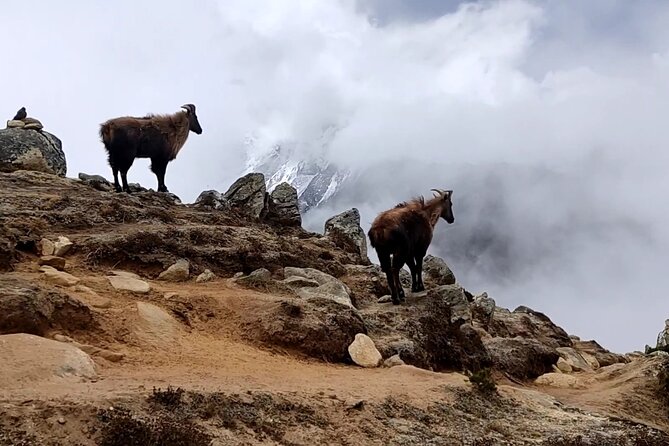
The Everest Base Camp Trek is an unforgettable adventure that attracts thousands of trekkers each year. It offers breathtaking views of Mount Everest, the highest peak in the world, and immerses trekkers in the rich culture of the Sherpa people.
Many who embark on this trek rave about the stunning Kalapatthar viewpoint at 5,600 meters, where the sunrise paints the mountains in shades of gold. The best times to go are during spring and autumn, when the weather’s just right.
Trekking through the Khumbu region, travelers often share stories of camaraderie with fellow adventurers and the warmth of local hospitality. It’s more than just a trek; it’s a journey filled with awe, challenge, and unforgettable memories.
You can also read our reviews of more tours and experiences in Kathmandu.
Detailed Trek Itinerary
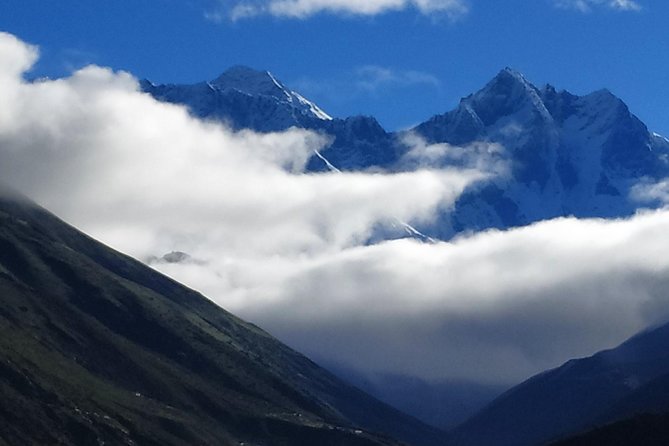
Setting off from Kathmandu, trekkers embark on a journey that unfolds over twelve days, each filled with adventure and discovery. The itinerary is carefully crafted to balance trekking with acclimatization, ensuring trekkers enjoy every moment.
Here’s a sneak peek at the daily highlights:
| Day | Destination | Key Activities |
|---|---|---|
| 1 | Lukla to Phakding | Flight and short trek |
| 5 | Dingboche | Explore village and culture |
| 9 | Base Camp | Hike to Everest Base Camp |
Each day brings unique experiences, from charming villages to stunning views. Trekkers often share stories of camaraderie and breathtaking landscapes that make the effort worthwhile. Remember to savor each moment; it’s not just about reaching the destination!
Inclusions and Exclusions
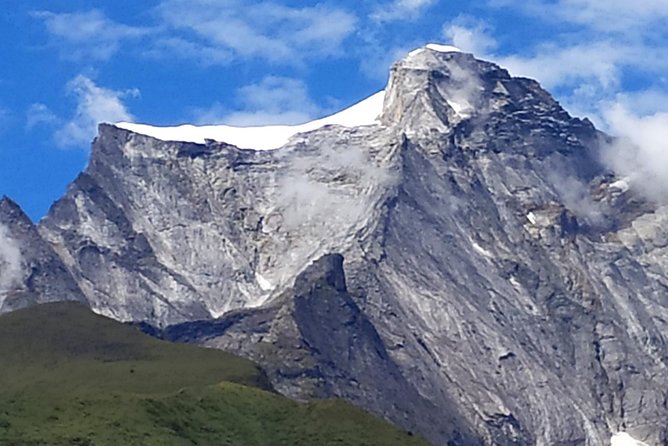
When planning an Everest Base Camp trek, knowing what’s included and what’s not can make a big difference in your adventure. Most packages cover private transportation, flights between Kathmandu and Lukla, necessary permits, and comfortable accommodations. This means trekkers can focus on the breathtaking views without worrying about logistics.
However, it’s essential to remember what’s not included. Drinks, extra nights, and personal expenses like laundry or charging costs can add up.
Travel insurance is a must, too, as is tipping your guides, who often go above and beyond. A friend once shared how unexpected costs surprised them, so being prepared can help keep the trek enjoyable.
Work out your budget before you go, and you’ll be set for an unforgettable experience!
Meeting and Pickup Details

Planning your Everest Base Camp trek? It all begins with the meeting and pickup details.
Travelers can relax knowing pickup’s available from any location within Kathmandu, as long as they provide their hotel address and room number. This convenience makes it easy for everyone, especially after a long flight.
However, it’s important to note that the service isn’t wheelchair accessible and isn’t recommended for pregnant travelers or those with serious medical conditions. A friend of mine found this out the hard way when she attempted to join us after a recent surgery.
Fitness Requirements

After sorting out the pickup details, it’s vital to consider the fitness requirements for the Everest Base Camp trek. A moderate level of physical fitness is essential, as trekkers will cover significant distances each day, often ascending to high altitudes.
It’s recommended to start training a few months beforehand, incorporating cardio exercises like hiking, running, or cycling.
One trekker shared how daily walks and stair climbing helped them build stamina. Another recalled the importance of listening to their body during acclimatization days.
Hydration and proper nutrition also play key roles in maintaining energy levels. Ultimately, preparing physically not only enhances the experience but also boosts confidence when tackling those breathtaking Himalayan trails.
Weather and Best Times
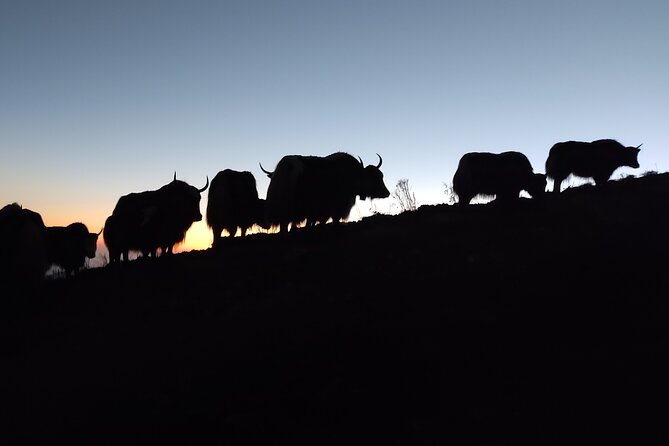
The weather on the Everest Base Camp trek can be quite unpredictable, making it crucial for trekkers to choose their timing wisely.
Typically, the best months to embark on this adventure are March, April, May, September, October, and November. During these periods, trekkers enjoy clearer skies and more stable temperatures.
A friend once shared how trekking in mid-October allowed her to capture stunning views with minimal cloud cover. However, she cautioned that even in peak seasons, sudden storms can arise.
Therefore, it’s wise to prepare for all weather conditions. Packing layers, waterproof gear, and a good hat can make the trek much more enjoyable, ensuring trekkers are ready for whatever nature throws their way.
Cultural Insights
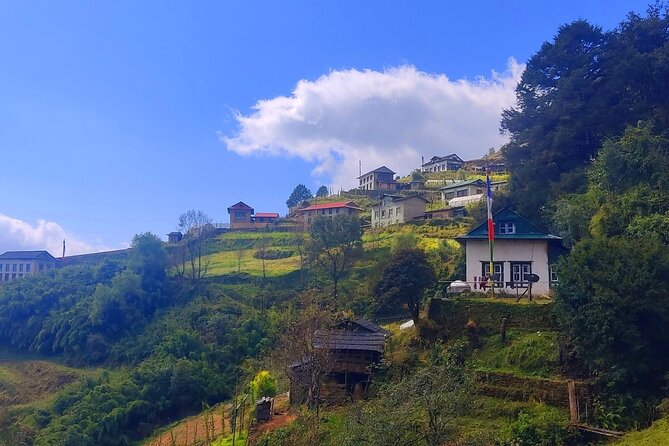
When trekking to Everest Base Camp, immersing oneself in the rich culture of the region enhances the experience significantly.
Trekking through Sherpa villages, travelers encounter vibrant prayer flags, ancient monasteries, and warm smiles from the locals. One trekker recalled sharing a cup of chai with a Sherpa family, learning about their daily life and customs.
Engaging with local traditions, like the colorful festivals or the art of weaving, offers a deeper understanding of the Sherpa way of life.
It’s also wise to respect cultural practices, such as removing shoes before entering homes and monasteries. These small gestures create a connection, making the journey not just about reaching a destination but also about embracing the heart of the Himalayas.
Trekking Experiences and Reviews

While many trekkers describe their journey to Everest Base Camp as life-changing, the stories behind those experiences reveal the trek’s true magic.
Trekkers often rave about the breathtaking views and the camaraderie built along the way. One traveler shared how the guides’ expertise made the ascent easier, turning challenging moments into unforgettable memories.
Many highlight the warm hospitality of the Sherpa people, feeling welcomed in their villages. One hiker recalled sipping tea in a cozy teahouse while gazing at the majestic peaks.
With a perfect rating of 5.0 from reviews, it’s clear that the combination of stunning scenery, supportive guides, and rich culture creates lasting impressions, leading many to vow to return for another adventure.
Frequently Asked Questions
What Type of Gear Do I Need for the Trek?
When planning a trek, she found sturdy hiking boots, warm layers, and a reliable backpack essential. A good sleeping bag and trekking poles made her journey easier, ensuring comfort and safety on the trails ahead.
Are There Any Age Restrictions for Participants?
There aren’t strict age restrictions for participants. However, most trekkers are between 12 and 65. It’s essential for anyone, regardless of age, to maintain good physical fitness for an enjoyable experience.
How Is Altitude Sickness Managed During the Trek?
Altitude sickness is managed by acclimatizing properly, staying hydrated, and knowing the signs. Guides often monitor trekkers closely, ensuring everyone’s comfortable. They encourage slow pacing, which helps prevent issues and keeps the experience enjoyable.
What Are the Dining Options Along the Trek?
Along the trek, travelers find cozy teahouses offering local cuisine, including dal bhat and momo. They often share stories over meals, enjoying the communal atmosphere and sampling delicious dishes prepared by friendly hosts. It’s memorable!
Can I Hire a Porter for My Belongings?
Yes, he can easily hire a porter for his belongings. Many trekkers find it invaluable, allowing them to enjoy the journey without the extra weight. It’s a practical choice that enhances the overall experience.
The Sum Up
To sum it up, the Everest Base Camp Trek isn’t just a hike; it’s a journey filled with stunning views, rich culture, and unforgettable moments. Whether it’s sharing stories around a campfire or standing in awe at Kalapatthar’s sunrise, there’s something magical about this trek. For those considering it, just remember to prepare well, embrace the challenges, and soak in every moment. After all, it’s the experiences along the way that’ll leave a lasting mark on your heart.
More Hiking & Trekking Tours in Kathmandu
More Tour Reviews in Kathmandu
Not for you? Here's more nearby things to do in Kathmandu we have reviewed
- From Lukla: Everest Base Camp (EBC) 10-Day Trek
- Kathmandu : Everest Mountain Flight – with Private Transfers
- Full Day : Kathmandu Sightseeing By Bus Day Trip
- Kathmandu: 7 UNESCO World Heritage Sites Day Tour
- Kathmandu: 8-Day Langtang Valley Trek with Transfers
- Thamel Rickshaw Tour
- Everest View Motorbike Tour- 6 Days
- Kathmandu: Top 4 UNESCO Sites Private/Group Tour with Lunch
- From Oceans to Mountains-9 Days (Nepal Guided Tour)
- From Kathmandu: Everest Base Camp Helicopter Tour landings
- Kathmandu: Food and Drink Walking Tour
- Life and spirituality tour of Kathmandu
